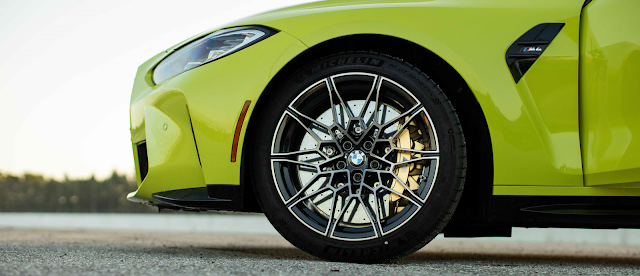The present world goes beyond the technologies which pave the way towards an insufferable future, as per individual's hope, I THINK SO!. Whatever the technology came up from innovators, it rolls off towards the people only through wheels. Whatever the speed whatever the road, wheels contribute for you. But the trait is if any sharpened particles on roadsides risk the wheels with a puncture, the weird part that interrupts our journey by delaying the time. Whether tubed or tubeless, it's one of the characteristics of a tire, which may happen, unfortunately.
To overcome this crisis, tire manufacturers decide to make self-supporting tires to assist the vehicle without losing its stability, even at high speeds too. As per concerns, they bought many concepts outside like Self-sealing tires, TPMS (Tire Pressure Monitoring System) while considering safety, etc... One of those is the Run Flat Tire technology, which started to roll on roads in the early 80s.
These Run Flat tires come in two different designs, one is self-supporting, and another is auxiliary, which is a supplementary supporting tire.
Generally, in conventional tires, the layers on the sidewall and tread have made of the same rubber material with the same strength. However, in the self-supporting type, the sidewalls are thickened extra heavier for making more stiffer. It will enhance the support when the required pressure gets dropped or punctured.
In an auxiliary-supporting tire, Ring support has been provided, which is formed of hard rubber that sticks with a wheel rim inside. As per the name, it assists the tire when it latches onto low pressure or gets punctured.
Both require a Pressure Monitoring System to know about the inflation of the tire. Because the differences couldn't be able to note precisely due to their shape.
While moving towards the riding experience, Run Flat tires performed as same as conventional. But the thing is if a puncture happens while crossing speeds, your vehicle can't lose its stability. It supports managing the weight even if the tire gets a blowout due to some lack of maintenance. It can run on zero pressure inside the tire capably by reinforced sidewalls or ring support, based on the type used respectively.
We can safely move out from the suffered conditions to some extent (i.e.,) if a puncture or low air in any of the tires, we can not need to replace the tire. We can drive with that unconditioned tire up to the range of 80km, even at 80mph as the maximum speed as per Bridgestone's data. Meanwhile, if the workshop is on the way, no problem, we can fix it.
The main advantage of this Run Flat tire is that we can handle the car stably, even puncture occurs, so time waste situation has avoided. The spare wheel is not required, so the weight is also reduced. Better dynamic handling with stiffened performance makes this tire popular today. That's the only reason the well-known automakers like BMW, Audi, etc., have preferred these Run Flat tires.
Even though its better performance, cost-wise, it is too expensive than conventional tires. And the main disadvantage is that it wears out quicker than the normal tires because by increasing the reinforcement inside, they use soft rubbers on treads to achieve comfortable riding. Whatever the drawbacks, to make the journey uninterrupted, Run Flat tires are the best and preferred.
One such interesting fact is that Mickey Thompson, an American auto racing builder plus promoter, achieves a record of 400mph on land by designing the strengthened tire on their own for his Challenger1 car.
reference: bridgestone.com
DROP A COMMENT IF IT IS INFORMATIVE!








0 Comments